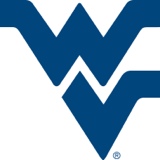Information
-
Campus
-
Building
-
Room # (No Spaces or Dashes)
-
Conducted on
-
Inspector / Auditor
-
Document No.
Lab Audit
-
College
- Agriculture
- Arts & Sciences
- Engineering
- Facilities
- Potomac
- Tech
- Other
-
Department
- Agricultural Sciences
- Biology
- Chemical Engineering
- Chemistry
- Civil Engineering
- Comp Eng
- Forestry
- Geology
- Industrial Eng
- Mech & Aero Eng
- Mining Eng
- Physics
- Petroleum & NG Eng
- Other - (List in Next Field)
-
Enter Name of Person Responsible for Lab Space and where that name was acquired
Chemicals
-
Are any chemicals utilized in this lab?
General Storage
-
Elemental Mercury, devices, or equipment is present (excluding lamps)
-
Select all Mercury Equipment observed. (Advise users of exchange program)
- Thermometer
- Monometer
- Thermostat
- Switch
- Barometer
- Other
-
Does Mercury equipment appear to be In Use, not just in storage?
-
Refrigeration units for chemical storage labeled "No Food"
-
Chemical storage cabinets properly labeled
-
Containers clearly labeled with chemical name(s)
-
Containers marked with Date Received
-
Containers kept closed except during transfers
-
Containers compatible with the chemical
-
Chemicals segregated to avoid incompatibilities
-
Corrosives not stored above 5 feet
-
Storage quantities minimized
-
Secondary containers used during transport of more than one pint of chemicals
-
High hazard or highly reactive chemicals present?
-
If reactive metals are present, is a Class D extinguisher available (Only if needed, otherwise N/A)
-
Peroxide forming chemicals dated when received, tested after 6 months, and considered waste by 1 year
Personal Protective Equipment
-
Goggles available for chemical splash protection
-
Gloves available for chemical protection
-
Lab Coats available for chemical protection
-
Safety Glasses available for eye impact protection
-
Gloves available for cut or thermal protection
-
Does PPE appear to be utilized
-
Occupants wearing Fully Closed Footwear
-
User enrolled in respiratory protection program (if needed)
Emergency Equipment
-
Safety shower available
-
Safety shower unobstructed
-
Safety shower tested and passed within 1 year
-
Eyewash available
-
Eyewash unobstructed
-
Eyewash tested and passed within 1 year
-
Eyewash bump tested weekly
-
Spill control materials available
-
Spill control materials adequate to cover anticipated spills
-
First aid kit available
Flammable Liquids
-
Are any Flammable Liquids present?
-
Stored in flammable liquid storage cabinet
-
Used in fume hood or well-ventilated area
-
Flammables separated from strong oxidizers
-
Flammable liquids not stored near hot plates or other ignition sources
-
Class ABC or BC fire extinguisher available
-
Refrigeration units approved for flammables storage
Ventilation
-
Each chemical fume hood has been flow tested
-
Fume hood vents (baffles) unobstructed
-
Fume hoods used with sash in appropriate position
-
Chemical storage strictly limited in actively used hoods
-
Are Biological Hoods specifically marked "For Bio Use Only" or "Not a Chemical Hood"
Waste Chemicals
-
Is there any chemical or hazardous waste generated in this area? (Including potential to generate.)
-
Containers labeled with the words Hazardous Waste or as approprate
-
Containers kept sealed tight except during transfer
-
Constituents of the waste listed on the container label
-
Only Containers that are full are Dated (except 90 day areas)
-
Accumulation limited to <1 quart of Acutely hazardous waste
-
Containers compatible with waste
-
Room is locked or occupant is present
-
Phone or other communication device accessible
-
Is a sharps container available (only if needed, otherwise N/A)
-
Separate disposal containers available for broken glass (only if needed, otherwise N/A)
Required Information / Postings
-
704 posting up to date
-
Picture(s) of Door Posting
-
Safety Data Sheets binder / packet readily accessible
-
Written Chemical Hygiene Plan available in lab
-
CHP has Lab Specific section completed
Liquified or Compressed Gases
-
Are any compressed or liquified gasses present?
-
Is there a shutoff near door for labs with natural gas
-
Is a fire blanket available nearby for labs with natural gas
-
Are cylinders segregated / separated by hazard class
-
Protective valve caps in place
-
Secured from tipping while stored or in use
-
Regulators compatible with gas cylinder
-
Storage quantities minimized
-
Empty or unused gas cylinders promptly returned to supplier
-
Used in well-ventilated area
-
Toxic, flammable, corrosive gases used in fume hood
-
Ventilated gas cabinets used to store highly toxic gases
Cryogenics
-
Any cryogenics present or used?
-
Personal protective equipment used to avoid skin contact
-
Used/dispensed with good ventilation
-
Containers vented or pressure relief devices provided
-
Low temperature embrittlement considered
-
Glass dewars shielded
General Safety
-
No food or drink present in work areas
-
Refrigeration units for food labeled Food Only
-
Shelving adequate for loads imposed
-
Large/heavy containers stored on lower shelves
-
Only lightweight or small, inert materials stored above 5 feet
Other Comments
-
What elements of research are being conducted?
- Chemical
- Radioactive
- Biohazards
- Microwaves
- Lasers
- Strong Magnetic Fields
- Nanoparticles
- Office/Computer ONLY
- Other (define below)
-
Please sign upon Audit completion






